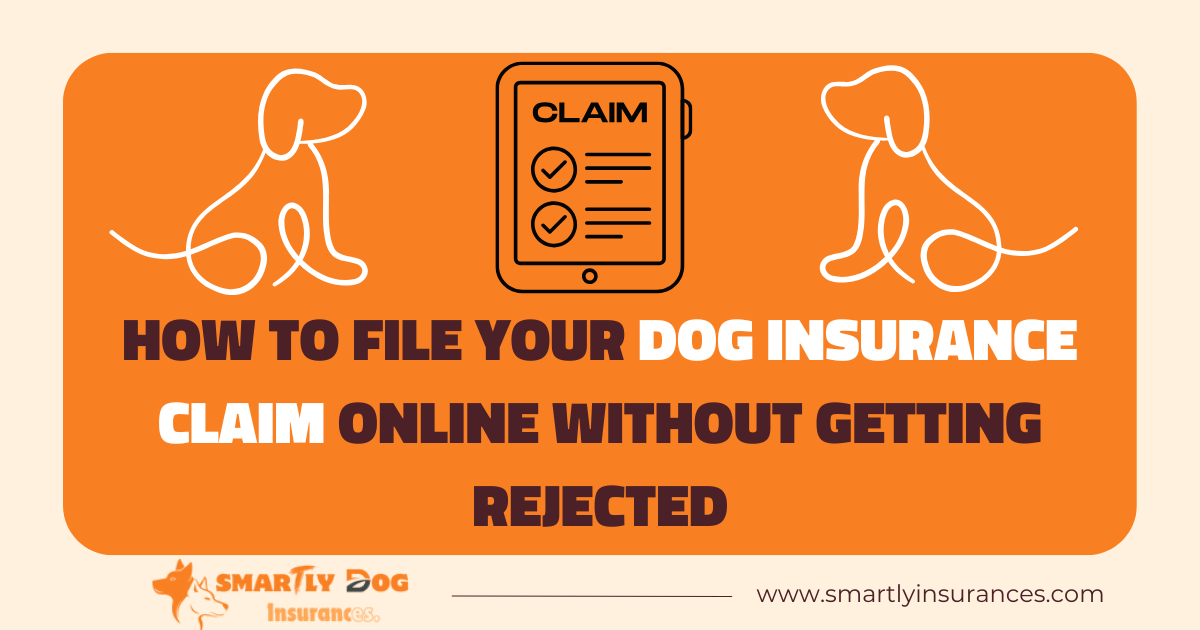Pet insurance reimburses between 70% to 90% of your vet bills, but many pet parents struggle with online claim submissions and face avoidable rejections.
Your insurance provider allows 60 to 270 days to file claims. The process takes 5 to 14 days, so getting your documentation right becomes significant. Pet parents who understand insurance claims and prepare proper documentation beforehand can handle the process better.
Let us help you file claims successfully, regardless of your experience with previous rejections or first-time filing. You will learn the exact steps to submit your pet insurance claim and receive reimbursements faster.
What You Need Before Filing a Claim
Your pet insurance claim’s success depends on proper documentation. We need three essential documents: an itemized invoice, medical records, and SOAP notes.
Required Documents Checklist
Make sure your claim has a finalized invoice that shows a zero balance or paid-in-full status. You’ll also need detailed medical records, especially SOAP (Subjective, Objective, Assessment, and Plan) notes from your vet. These records must include:
- Vaccination history
- Medical history
- Diagnostic test results
- Medication records
- Preventive care documentation
Organizing Digital Files
Set up a digital folder just for your pet’s insurance papers. Cloud storage platforms like Google Drive or Dropbox will give a way to access your files from any device. You should organize your files by date and type to retrieve them easily during claim submission.
Taking Clear Photos of Bills
Your veterinary bill photos need clear, legible text that shows the full document. Good lighting and steady hands are vital for capturing clear images. Keep your camera right above the document to avoid distortion and check if all amounts and dates show up clearly before you submit.
Note that you must submit your claim within the specified timeframe – anywhere from 90 to 270 days, based on your provider.
Step-by-Step Online Filing Process
Filing a pet insurance claim online is easy through your provider’s website. Insurance companies give you several ways to submit claims, including mobile apps and web portals.
Creating Your Online Account
The original step is to register for an online account on your provider’s website. Your policy number and payment information are needed to complete the setup. This registration gives you access to policy details and claim submission tools.
Filling Out the Pet Insurance Claim Form
The “Submit a Claim” option appears on your account dashboard. The online form needs:
- Treatment details and diagnosis
- Date of service
- Veterinary clinic information
- Payment verification
Most providers process standard claims within 5-7 business days. Some companies also provide direct deposit reimbursement options to process payments faster.
Uploading Documentation
You can upload your supporting documents through the portal. The system accepts clear photos or scanned copies of your itemized invoices. Here’s how to get the best results:
- Include all pages of invoices
- Submit complete medical records if requested
- Match file formats to provider requirements
You can track your submission through the provider’s mobile app or web portal. Companies usually send confirmation emails once they receive your claim. Note that first-time claims might need additional medical history reviews, so submit them quickly within your provider’s filing window.
Common Rejection Reasons to Avoid
Knowledge about claim rejections can help you avoid future denials. Studies show that about 7% of claims face rejection because of administrative errors.
Missing Information Errors
We rejected claims mostly because of incomplete documentation. Insurance providers need detailed medical records, itemized bills, and accurate patient information. Even small mistakes like wrong policy numbers or outdated ZIP codes can trigger claim denials.
The numbers tell an interesting story – 20% of submissions lack the work to be done. Here’s what you need to prevent rejections:
- Send all invoice pages, including blank ones
- Add complete lab results
- Include detailed medical records with diagnosis
- Keep your personal information up to date
Wrong File Formats
File formats can become a major roadblock in the claims process. Provider guidelines have specific requirements for file submissions. Insurance companies accept PDF, PNG, or JPEG formats, but files must stay under 50MB.
Email attachments should stay under 5MB. Larger files need compression or splitting before you submit them. Note that you must keep image quality high while reducing file sizes – unclear documents will take longer to process.
Tracking Your Claim Status
Your claim’s progress tracking plays a vital role after submission. Insurance providers give you several options to check your claim’s status in their system.
Using the Provider’s Mobile App
Mobile apps provide up-to-the-minute data analysis of your claim status. You can view details of every submitted claim and monitor multiple open claims at once. These apps work on both Android and iOS devices and help you access your pet’s medical records and set medication reminders.
Setting Up Email Notifications
Your insurance provider will send automatic updates about your claim’s progress. You’ll receive confirmation emails within 2 business days after submission. These notifications will alert you when:
- Your claim is received
- Additional information is needed
- Processing is complete
- Payment is issued
Following Up on Pending Claims
The processing time ranges from 10 to 15 days, though some providers might need up to 30 days. Contact your provider immediately if your claim stays pending to identify potential issues. Your vet’s office should send any additional required information within 24 to 48 hours.
Your provider’s tracking systems display status indicators like “Open,” “In Review,” or “Complete”. You can also call the customer service team directly to get updates about your claim’s progress.
Last Words
Pet insurance claims need attention to detail and proper preparation. Pet parents can avoid most claim rejections with the right approach. These rejections often happen due to simple oversights.
Here’s everything you need for successful claims: Complete documentation should be ready beforehand. Digital files must be properly stored. Clear photos of bills need to be submitted. Your claim status should be tracked on your provider’s platform.
Your careful preparation will speed up claim processing and boost success rates. Pet insurance helps offset veterinary costs. You’ll receive your reimbursement faster by doing this.
Your pet’s medical records should stay up to date along with current policy information. A well-laid-out approach to managing insurance claims helps you get the most from your coverage. The claims process becomes less stressful this way.



